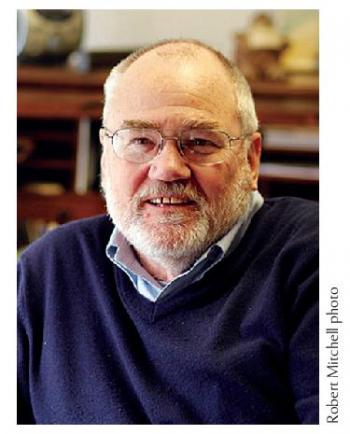The rest of the story
Last week, as the Red Sox were cementing their hold on last place, I switched to PBS to watch the Ken Burns three-part film on the Holocaust.
It was not an easy program to watch as Burns & Co. took us step by step through Hitler's takeover in Germany, how he consolidated his hold on the hearts and minds of the populace and triggered World War II.
Along the way, he and his Nazi thugs set out to eliminate Europe's Jewish population on an industrial scale.
Many of those targeted for doom tried to escape to America by applying for visas. Many found their efforts stymied by bureaucrats, quota laws, indifference and hate. It was not our proudest moment.
But the Burns series was not all doom and gloom. It contained a moment, a tiny sliver of good news, a little ray of sunshine, that brings us to the Boothbay region.
Here is the story that Burns & Co. left out.
In June 1944, President Franklin D. Roosevelt authorized the Army to rescue 1,000 Jewish refugees. One of the lucky 1,000 was a 16-year-old from Belgrade. His name was Paul Bokros. You may have known him as a smiling summer visitor who owned a home on Barters Island.
Paul and his wife, Greta, both died in 2021. But in 2015, he sat down with me at Boothbay Harbor Memorial Library and told me his story.
His father was a well-to-do businessman when the war broke out. The family was smuggled across the Adriatic Sea to Italy with the help of anti-Nazi partisans. As the American and Allied forces pushed the Nazi army through Italy, the Bokros family was living in an abandoned insane asylum in Naples when the father finagled a way to get them on an Army transport ship.
After three weeks at sea, they arrived in New York. Seventy years later, when Paul talked of spotting the Statue of Liberty, you could see tears in his eyes.
After processing, they boarded a train which brought them to Oswego, a small town (pop. 22,000) in upstate New York. There, on the banks of Lake Ontario, was an Army fort that had not been a major military installation since the British left in 1796.
As Paul told me, when the train passed through the town, the townsfolk cheered them. Some gave them apples. You have to remember the first time many enjoyed regular meals was when they boarded the ship. Barbed wire fencing ringed the barracks, but Paul and other teenage boys soon noticed some girls standing on the other side of the fence.
As Paul related the events when we talked, he remembered the Oswego girls.
“They looked like Hollywood stars, dressed in bobby socks and white men's shirts. They wore lipstick and smelled of cologne. We had never seen such a sight since we left home,” he said.
The boys quickly moved to meet them. “Some of the girls spoke a little Italian and they handed us ice cream.”
Bokros had a dime in his pocket earned by cleaning a lavatory. He gave it to the girls and pointed to a small store across the street. They ran over and came back with a basket of stuff: Royal Crown Cola, Eskimo pies, and candy bars.
“You know we were 15-year-old boys, and these were nice girls. Somehow we were able to communicate. Within a few weeks, the girls would sneak under the fence, much to the delight of the boys," he said.
Town residents and Jewish representatives of faith organizations pitched in to help settle the refugees and provide them with necessities, including shower curtains for the women.
The Oswego schools enrolled the children. Paul said it took him about four months to learn English. At the Oswego high school, an industrial arts teacher introduced him to the mysteries of electronics.
After the war ended, Paul and his family moved to Philadelphia, where he got a job helping to repair electronic gear at Temple University Tech Institute. When the Korean War broke out, he joined the Air Force as an electronics instructor.
After the war, he returned to Philadelphia, earned a degree in electronic physics, and began a 40-year career in the defense industry that included working on several major projects and as a director of the F-16 fighter jet. He retired as a vice president of General Dynamics.
During summers, Paul and Greta loved to entertain their family at their Barters Island home.
Paul was a proud American and not afraid to say so.
“Only a foreign-born can truly understand the nature of the trunk of the tree on which he’s grafted. Only a foreign-born can truly appreciate what America is,” he said.

































